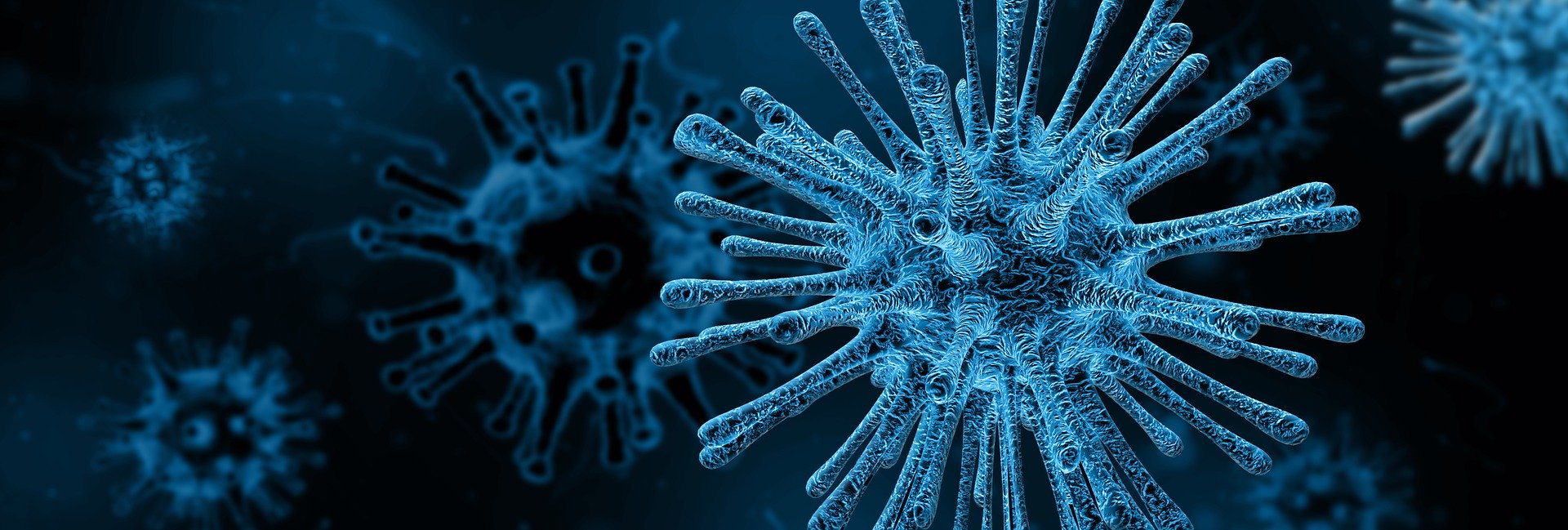Viruses- Part 1
“Are viruses, in your opinion, alive?”
The question hung in the air. The lab tech leaned back in her chair, chewed the end of her pen pensively, and then asked, “How do we mean ‘alive?’ Do we mean literally? Metaphorically?”
The visitor squinted in confusion. “Literally, I suppose?”
“Well,” The lab technician slowly tucked her pen behind her ear, dragging the word out like the ringing of a gong. “I consider it ‘not alive.’ It’s DNA packaged within protein and lacks any other cellular components. It can copy itself in cells, but other than that, they can’t do anything else on their own. So, in a literal sense, viruses aren’t alive.”
The visitor held up a hand. “But isn’t a virus, by definition, a biological selfish replicator—”
The pen went from behind her ear to being brandished like a falchion within a heartbeat. “Ok, hold it right there! Calling it that leaves the realm of ‘literal’; now you’re going into arbitrary metaphorical territory, talking about selfishness and stuff!”
“No, I’m not!”
“You did! You literally just did!”
What do World War Z, Contagion, and The Stand have in common? Well, if you haven’t figured it out yet from the title of today’s blog, it’s that all of them center around viruses!
Viruses are one of the most (if not the most) common biological tool authors use in Science Fiction, and it’s not terribly surprising why. Viruses are inherently terrifying. They are tiny but deadly assassins. They can spread like wildfire between and within people. And, most importantly, we have seen how lethal they can be in real life: the Ebola virus, the current Wuhan virus, HIV, polio, measles… the list goes on. Unless you’ve been living under a rock, you have most likely watched one of these epidemics unfold (I was in college when the Ebola virus epidemic started and actually got to study the growth of the epidemic since I was in medical anthropology).
This topic is very near and dear to my heart, because I actually became interested in science from learning about the HIV virus in elementary school. This would then lead me to my interest in biology and, in turn, immunology. So, I geek out a little when I get to talk about vaccines or viruses. This will most likely be a four-part series rather than 3 so that we can also cover the diversity of viruses in a separate post rather than cramming it all into part 1.
(Although, let’s be honest here: I geek out all the time while writing my posts!)
And yes, whether or not a virus is actually alive is a debate, although most pathologists that I know do not consider viruses to be “living organisms.” What is very strange, considering how we speak of viruses as if they were living and calculating creatures e.g. “Kills 99% of all viruses”… How can you kill something that is not alive? (cue philosophical pondering music…)
Without further ado, let’s dive into the topic of viruses!
What Are Viruses in General?

Viruses are what we call pathogens, meaning that they cause diseases when they enter the cells of living organisms. Viruses, unlike bacteria or fungi, can’t replicate unless they enter a cell (this is one of the reasons why they are largely considered “not living.”). The reason is because a virus is fundamentally made out of 2-3 things:
1) DNA/RNA: This stuff is the blueprint of the virus. DNA (deoxyribonucleic acid) is in our cells as well, contained in the nucleus. RNA is similar to DNA, but lacks an oxygen and hydrogen. The DNA within the virus has the blueprints to make all of the components of the virus… the only problem is that it doesn’t have a way to turn those blueprints into the components.
2) Protein: Not to be confused with the “protein powder” stuff. Proteins are chains of this things called amino acids that can fold into different shapes that enable them to do stuff. The proteins in this case fold into small bits that then form together to make a compartment/shell for the DNA/RNA of the virus. We call this a “protein capsid.”
3) Fat/Lipid: “Fats” in biology are called “lipids.” Certain viruses have a second outer layer beyond their protein shell. It is this second layer that the lipids make up, like a little soap bubble. The term for the overall bubble is “viral envelope.” You don’t see these for bacteria viruses, but they are seen for viruses that infect mammals (HIV being a prime example).
Now, there may be a term you’ve heard thrown around in regard to viruses: “glycoproteins.” This is a fancy way of saying “proteins that have sugars attached to them.” They fall under the protein category.
Their overall shape differs depending on the type of cell that they infect. Some are spheres, some are helical in shape, some look like boardgame dice (polyhedral), and some look like little satellites (these are bacteriophages, viruses specifically for bacteria). This will be explored a bit more in the next blog post as we delve into different examples of viruses.
 A small, teeny-tiny glimpse at the variety of shapes among viruses.
A small, teeny-tiny glimpse at the variety of shapes among viruses.
What Do They Do?

So, the whole purpose of a virus is to go into a cell, hijack the proteins in said cell, and replicate itself like crazy! But it can do this in a few ways.
One way is by entering the cell and replicating right then and there in the cell’s interior. Fun fact: the coronavirus is a virus that has carries its own replicating machinery to start copying its RNA strand without ever having to go into the nucleus. The replicated RNA strands are then translated into viral proteins (again, all hijacking the other mechanisms in the infected cell). The viral proteins then conglomerate into a whole virus, and then BURST out of the cell.
Other ways of replicating involve sneaking into the host’s nucleus, where all of the host DNA replicating proteins are. But the same idea applies: encode for viral proteins using the host’s machinery, come together, and then BURST out of the cell.
But… Some viruses have a “stealth mode.”
This is where things start getting fun.
We call this latency, where the virus’s DNA slips into the DNA of the host cell and incorporates itself into the genome. Instead of producing viral pieces, the DNA piece is hidden from anything and everything (I am exaggerating, yes, but you get the idea).
This may not seem like a bad thing since the DNA is just sitting there, but these “hidden viruses” can make the viral infection nigh un-treatable. Take HIV for example: we can treat the viruses out in the bloodstream, but the second the patient stops taking their medications because they have “undetectable levels of virus,” they can develop the infection once more. That’s because these HIV “reservoirs” of DNA that hid away in cells were not taken care of by the medication, and can restart the infection after treatment stops (more to come on HIV in the next post).
The worst part? If that cell with the hidden viral DNA starts to multiply for whatever reason (from injury, for example), that viral DNA can be replicated right along with it. So you can have an increase of viral DNA in your cells even if there are no viruses in your bloodstream.
The Takeaway?
Viruses are surprisingly simple, and that is what makes them amazingly capable of infecting millions. Beyond just making one sick, viruses also have the cabability of altering one’s genetic makeup by inserting themselve in there. They can be the worlds best assassins. They can be the genetic scramblers.
But there are other uses for them too, outside of just making people sick/zombies.
Before we can look at what they could do in a scifi context, however, we need to examine a few viruses in the next post to really explore some of the mechanisms viruses use. If we understand just a few of the ins-and-outs of viral replication, then we can look at how we as writers can hijack their mechanisms for our stories.
Terminology
Immunology/Pathology- the study of the immune system/ the study of infectious agents.
Pathogens- microorganism/virus that is capable of causing diseases.
DNA/RNA- Deoxyribonucleic acid/ Ribonucleic acid. The “blueprint” of life, so to speak. DNA contains the information necessary for proteins to be made but needs other components to make said proteins. RNA is similar to DNA but is less stable and can have a few more uses beyond carrying information for protein production.
Protein- Molecules made up of amino acids. These do the majority of “work” in your cell, and depending on their sequence and folding patterns, can perform a variety of functions (cut other proteins, act as a signal to other cells, etc).
Lipids- Referring to fat at the molecular level.
Latencey- Where the virus has hidden away in your DNA, unable to be touched (usually).
